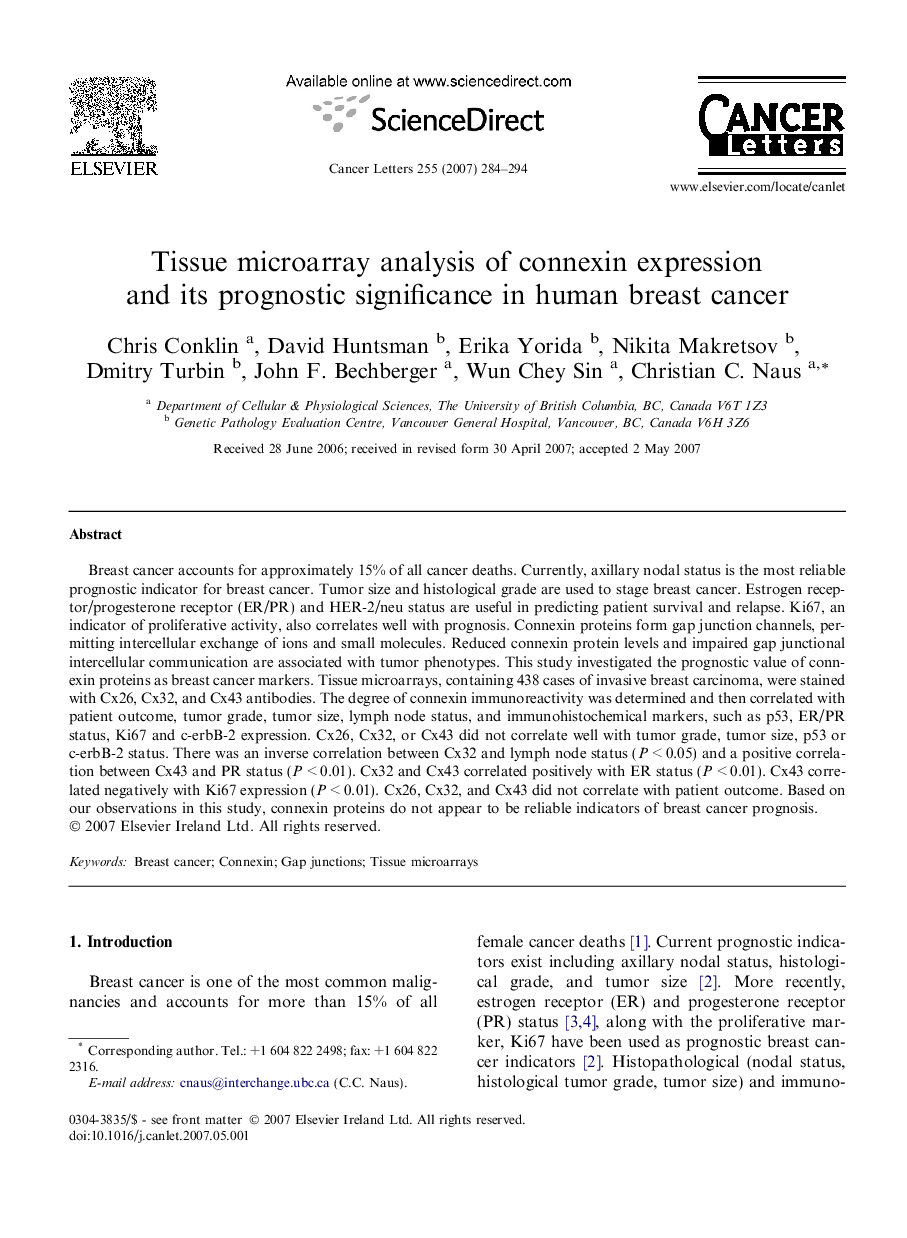| Article ID | Journal | Published Year | Pages | File Type |
|---|---|---|---|---|
| 2115159 | Cancer Letters | 2007 | 11 Pages |
Breast cancer accounts for approximately 15% of all cancer deaths. Currently, axillary nodal status is the most reliable prognostic indicator for breast cancer. Tumor size and histological grade are used to stage breast cancer. Estrogen receptor/progesterone receptor (ER/PR) and HER-2/neu status are useful in predicting patient survival and relapse. Ki67, an indicator of proliferative activity, also correlates well with prognosis. Connexin proteins form gap junction channels, permitting intercellular exchange of ions and small molecules. Reduced connexin protein levels and impaired gap junctional intercellular communication are associated with tumor phenotypes. This study investigated the prognostic value of connexin proteins as breast cancer markers. Tissue microarrays, containing 438 cases of invasive breast carcinoma, were stained with Cx26, Cx32, and Cx43 antibodies. The degree of connexin immunoreactivity was determined and then correlated with patient outcome, tumor grade, tumor size, lymph node status, and immunohistochemical markers, such as p53, ER/PR status, Ki67 and c-erbB-2 expression. Cx26, Cx32, or Cx43 did not correlate well with tumor grade, tumor size, p53 or c-erbB-2 status. There was an inverse correlation between Cx32 and lymph node status (P < 0.05) and a positive correlation between Cx43 and PR status (P < 0.01). Cx32 and Cx43 correlated positively with ER status (P < 0.01). Cx43 correlated negatively with Ki67 expression (P < 0.01). Cx26, Cx32, and Cx43 did not correlate with patient outcome. Based on our observations in this study, connexin proteins do not appear to be reliable indicators of breast cancer prognosis.
